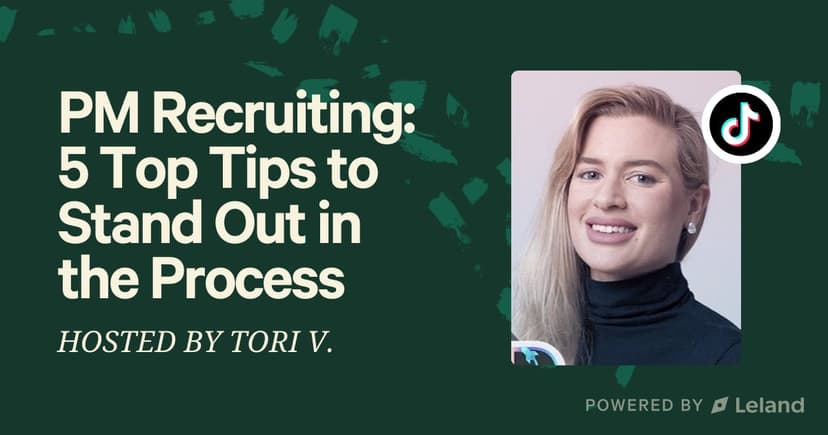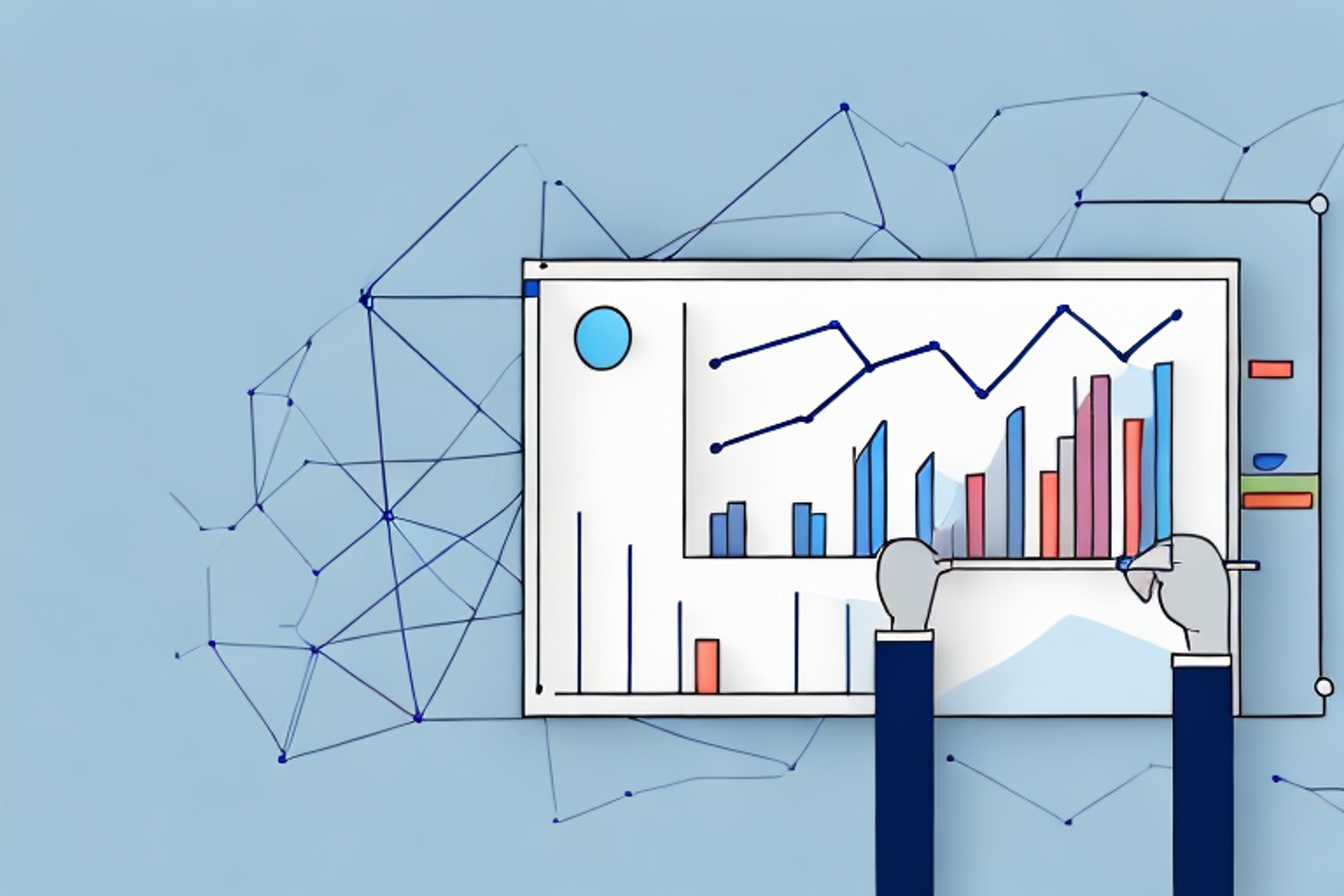How to Get Into the Salesforce APM Program (2024)
Read the ultimate guide to the Salesforce APM program to get you your dream product management role, including an overview of the application, sample questions, free resources, tips, and coach recommendations.
Posted June 13, 2025

Join a free event
Learn from top coaches and industry experts in live, interactive sessions you can join for free.
Table of Contents
What is the Salesforce APM Program?
The Salesforce Associate Product Manager (APM Program) is a two-year rotational program that lays the foundation for becoming a future product leader. This includes taking direct responsibility for products, consistently interacting with senior leaders, participating in enriching APM community events, and more.
What Does a Salesforce APM Do?
Salesforce APMs craft product solutions that make a profound impact on the world's largest enterprises; as such, their role is dynamic and fast-paced, encompassing end-to-end product development. Here's a snapshot of their daily activities:
- Conduct research sessions with customers for a pilot product.
- Collaborate with designers to prioritize product requirements.
- Coordinate with product marketing for an upcoming launch's deliverables.
- Lead feature walk-throughs during team meetings.
- Provide clarity and insights in stand-up meetings with engineering and design teams.
Beyond their daily responsibilities, APMs are integral to the broader program and its curriculum. This exposes them to crucial product management skills like influence-building and negotiation. The APM program also strongly emphasizes community, mentorship, advocacy, personal growth, and executive interactions.
Specific Job Responsibilities
- Understand and analyze user needs.
- Analyze market trends, competitors, customer research, and product data to drive the overall success of the product.
- Help to define product vision and strategy.
- Partner with designers to create an intuitive and beautiful user experience.
- Work with engineers to build and launch new features.
- Help evangelize product vision through presentations to stakeholders.
- Promote a customer-centric mentality and culture within the organization, where customer feedback is valued and integrated into the decision-making process at all levels.
- Establish a closed-loop feedback process where customers are advised about how their feedback has been used and the improvements that have been made as a result.
An Overview of the Salesforce APM Program Application (2023-2024)
The Salesforce APM program application is currently open here! We recommend applying ASAP as the application will likely close in the coming weeks.
Salary: 138,000-144,000/yr
Who: Spring 2024 or Winter 2023 grads
Start Date: August, 2024
Qualifications
- Bachelor's or Master's Engineering, Computer Science, or a related field.
- Previous industry internship in product management.
- Proven ability to deliver on commitments.
- Ability to be a self-starter, thrive under pressure, and manage multiple projects simultaneously.
- Excellent analytical, problem-solving, organizational, presentation, interpersonal, written, and verbal communication skills.
- Deep interest in creating and analyzing products.
- Product management or design experience with a focus on software products and technologies.
Interview Process
The interview process begins with a recruiter phone screen, focused on your background and interest in the role. If your background is a match, you will be connected with a product manager for a 45-minute virtual interview. As a last step, the top candidates, as selected by the hiring team, will be invited virtually for an interview batch day. If it’s a mutual fit, an offer will be extended (timelines vary).
Read: Navigating Your Interview by Salesforce
Application Tips
So, how can you make your Salesforce APM application stand out? Here are a few tips for giving yourself the best chance at success.
1. Polish your resume.
The APM program at Salesforce is extremely competitive. Most applicants who submit their resumes will not get an interview. The best way to try and get one is to have a great resume. Make your bullet points specific to what you did (that is, not a group), quantify your impact, and avoid filler or vague words.
Verify that every bullet point is relevant to the job you’re applying for and tie them into the role’s responsibilities. Many PMs also choose to include a “Projects” section on their resumes in which they can fill potential gaps, highlight work done outside of a day job, and include any certifications/courses completed.
For more resume advice, read An Expert’s Guide to Resumes: Five Tips to Make You Stand Out.
2. Be ready to answer “Why PM?” and “Why Salesforce?”
These are fundamental questions that will impact whether the recruiter sees you as eligible to continue the interview process. While you don’t need to have technical experience, you do need to be able to articulate your interest in technical disciplines. When answering the “Why Salesforce?” question, be specific. Don’t just talk about how big Salesforce is. What specific teams and/or products are you interested in? Why Salesforce compared to other major PM programs?
3. When answering questions about products and product features during interviews, talk about tradeoffs.
Almost every aspect of product management includes discussions of tradeoffs. How will releasing one feature affect others? What should the engineering team prioritize? Bringing up tradeoffs in interviews shows the interviewers that you are thinking logically about the real implications of PM decisions. It will also show that your recommendations can be trusted because you have thought out the pros and cons.
4. Don’t try to analyze every potential aspect of a problem/question. Show that you understand the question through a north-star goal and then define any relevant metrics.
Your time during interviews is limited and it’s important that you’re getting to the point and covering all the bases. When asked a question about a product, explain the overarching goal as well as what metrics you would need to measure to reach that goal. If the interviewer pushes back, explain your assumptions and reasoning.
With that being said, don’t overwhelm the interviewer with every potential metric that could be relevant. Keep it narrowed to the most important ones and include justifications for why you chose them. What will actually drive success? What user behaviors are you looking to encourage?
5. Use a framework and think about the user experience.
Using a framework to structure the problem will show the interviewer that you approach problems methodically and are organized in your thinking. This includes talking about prioritization. If you’re discussing the implementation of a new feature, talk about the pros and cons of different solutions and what would need to be prioritized for each approach to work.
The user experience is the core of product management. Consistently factoring it in, through identifying desired user behavior and target user segments, demonstrates that you recognize the importance of the user in every product decision.
Read: Moving Beyond Frameworks: The Secret to Excelling in Product Management Interviews
50+ Sample Product Management Interview Questions
Salesforce-specific Questions
Product Sense
- Salesforce currently offers a wide range of products and services. How would you prioritize new feature development for an existing product in this diverse portfolio, considering customer needs and market trends?
- Imagine Salesforce is considering entering a new market segment that it hasn't targeted before. How would you assess the viability of this opportunity and develop a product strategy to penetrate and succeed in that market?
- One of Salesforce's products is facing increased competition from a new entrant. How would you approach enhancing the product to maintain its competitive edge while also ensuring customer satisfaction and retention?
- Salesforce is aiming to improve user engagement within one of its applications. What metrics would you use to measure user engagement, and what strategies would you propose to enhance it?
- Salesforce is planning to expand its product offerings through potential acquisitions. How would you evaluate a potential acquisition target and its alignment with Salesforce's overall product strategy?
- One of Salesforce's products has received feedback about a confusing user interface. How would you go about identifying the root causes of the confusion and implementing a solution to improve the user experience?
- Salesforce is interested in exploring opportunities in the realm of artificial intelligence. What are some use cases where AI could be integrated into existing products, and how would you approach implementing these enhancements?
- Salesforce's customers vary in size from small businesses to large enterprises. How would you design a pricing model that caters to the different needs and budgets of these diverse customer segments while maximizing revenue?
- Data security and privacy are critical concerns for Salesforce's customers. How would you ensure that new features or products are developed with robust security measures while maintaining a seamless user experience?
- Salesforce is known for its strong emphasis on customer success. Describe a scenario where you had to balance customer requests for new features with technical limitations and resource constraints. How did you handle this situation?
Execution
- Salesforce is launching a major product update in six months. How would you approach creating a detailed project plan to ensure timely delivery while coordinating cross-functional teams, managing risks, and adapting to changes that might arise?
- Imagine a situation where the development team is falling behind schedule on a critical feature. How would you address this issue, maintain alignment with stakeholders, and ensure that the product is still delivered on time without compromising quality?
- Salesforce is releasing a new feature that requires significant user training and documentation. Outline your strategy for rolling out the feature effectively, ensuring that users understand its value and are able to adopt it seamlessly.
- In a rapidly evolving market, a competitor releases a product with a similar concept to one Salesforce has been planning. How would you pivot the team's focus and resources to address this competitive threat while staying aligned with the original product vision?
- Salesforce is expanding globally, and your product needs to be localized for different languages and cultures. Describe your approach to managing the localization process, including prioritizing languages, coordinating with translation teams, and ensuring a consistent user experience across regions.
Leadership & Drive
- How do you resolve conflicts instead of avoiding or ignoring them?
- How have you solved a challenge, whether or not it was technically your problem?
- Can you adjust your leadership style to specific situations and people? Are you able to encourage collaboration and reconcile differences among opposing opinions?
- Do you know what your weaknesses are? Are you willing to learn and grow?
- Are you able to stick to things long-term?
Other Example Questions
- How would you approach integrating a newly acquired technology into Salesforce's existing suite of products?
- Salesforce serves a wide range of industries. How would you tailor a product's features and messaging to address the specific needs of a particular industry, like healthcare or finance?
- Salesforce is known for its AppExchange marketplace. Describe a strategy to encourage third-party developers to create and offer complementary apps on the platform.
- One of Salesforce's products is experiencing declining user engagement. What steps would you take to analyze the problem and propose solutions to re-engage users?
- Salesforce emphasizes data security. How would you ensure compliance with data protection regulations while introducing new features that involve customer data?
- Salesforce often releases updates and enhancements. How would you gather feedback from customers about their experiences with these updates and iterate based on their input?
- Salesforce's products serve both B2B and B2C customers. How would you differentiate your approach to product management for these two types of customers?
- Salesforce has a vast ecosystem of partners and integrations. How would you prioritize integrations with external tools and services to enhance the value of a particular product?
- Imagine a scenario where a key customer requests a custom feature that isn't on the product roadmap. How would you handle this request while maintaining the product's overall strategy?
- Salesforce is expanding into new geographic markets. What factors would you consider when adapting a product for different cultural and regional preferences?
- Describe a time when you had to make a difficult trade-off between including a highly requested feature in a product and keeping the product's scope manageable. How did you make your decision?
- How do you prioritize customer feedback and feature requests when planning product enhancements?
- Can you provide an example of a product launch that didn't go as planned? What did you learn from that experience and how would you approach it differently next time?
- Explain the concept of the Minimum Viable Product (MVP) and how it applies to the development of new features or products.
- How do you ensure that your product remains competitive and aligned with market trends as technology and customer preferences evolve?
- Describe a situation where you had to collaborate closely with cross-functional teams, such as engineering, design, and marketing, to successfully deliver a product.
- What techniques do you use to gather user feedback and insights during the product development process?
- Walk me through the process you follow when conducting a competitive analysis for a new product idea.
- Product managers often face conflicting demands from different stakeholders. How do you handle situations where different stakeholders have divergent opinions on product priorities?
- Explain the concept of a user persona and how it guides product development decisions.
- How would you approach defining and measuring key performance indicators (KPIs) for a product's success?
- Describe a time when you had to pivot a product's strategy due to changes in the market landscape or unforeseen challenges.
- What strategies would you employ to gather qualitative feedback from users who might not be as vocal or proactive in providing feedback?
- How do you ensure that your product's user interface and user experience (UI/UX) align with user expectations and needs?
- Walk me through the steps you would take to develop a go-to-market strategy for a new product launch.
- In an agile development environment, how do you balance the need for quick iterations with maintaining a clear product roadmap?
- How do you handle situations where the development team encounters technical challenges that could potentially delay a product's launch?
- Can you share an example of a successful product feature you championed from ideation to implementation? What was your role in its success?
- Explain the concept of the "Innovator's Dilemma" and its implications for product management.
- How do you stay informed about industry trends, emerging technologies, and competitive products to ensure that your product remains relevant and innovative?
Other Resources to Break Into Product Management
Salesforce-specific
- Austin Haag – Recruiting and Networking for the Salesforce APM Program
- Salesforce Careers & University – Everything to Know About the APM Role at Salesforce
- Product Buds – Salesforce APM Panel
PM Guides:
- Aha! – Product Management Guide
- Udacity – Product Design by Google
- Infinity – Practical Product Management Framework
- Jeff Whitlock – The Beginner’s Guide to Product Management
- Product School – The Ultimate Product Management Guide
- Product Life – The Associate Product Manager Playbook
Other:
- Roadmunk – 10+ Free Customizable Product Roadmap Templates
- UpGrad – How to Crack the PM Interview
Where Can I Start?
Product management is becoming an increasingly competitive industry and the application process can be difficult to go through alone. Here are some of our additional PM resources to help you navigate the job hunt and recruiting journey.
- The 25 Best Entry-Level APM Programs
- Tips from an Expert: How to Prepare for Your Product Management Interview
- 20+ Free Product Management Resources
- Top MBA Programs for Product Management
- How to Get Into the Facebook/Meta RPM Program (2024)
- How to Get Into the Yahoo APM Program (2024)
- Cracking the MI-GSO PCUBED Interview: Questions You Should Prepare For
For personalized advice and guidance, work one-on-one with an expert Leland PM coach. They have experience at top companies and can help with any part of the application, recruiting, and hiring processes. A few of our top recommendations are below, and you can see our full list of world-class PM coaches here.
Final Note
Leland provides you with the content, community, and coaching that you need to build your dream product management job and accomplish other ambitious goals. Sign up today to gain access to additional free resources, community events, small group classes, world-class coaching, and more.
Browse hundreds of expert coaches
Leland coaches have helped thousands of people achieve their goals. A dedicated mentor can make all the difference.


























